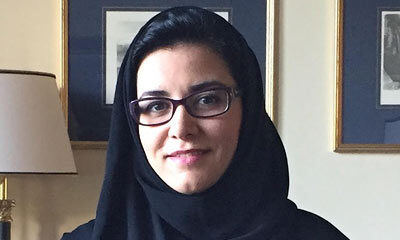Dr. Sumayah Al-Solaiman

Biography:
Previous to her current role, Dr. Sumayah Al-Solaiman served at Imam Abdulrahman bin Faisal University in Dammam in a variety of roles. She was Dean of the College of Design, Vice Dean of Quality, Development and Academic Accreditation, Chair of the Graphic Design and Multimedia Department and Director of Patents and Technology Transfer.
She has both a PhD (Newcastle University, 2010) and Master of Architecture (King Faisal University, 2002) and a Bachelor’s degree in Interior Architecture (King Faisal University, 2000). She has native proficiency of German, Arabic and English.
Her 20 years of teaching experience include 4 years at Newcastle University. Her research interests include areas of intersection between architecture and politics such as the mediation of power in space and place; ideologies and nation-building in architectural practice; and regionalism within modernism. She has some peer-reviewed publications and participated in conferences and symposia. She was also editor-in-chief of ‘Forum: International Journal of Postgraduate Studies in Architecture, Planning and Landscape’.
Besides her academic and administrative duties she was the organizer for the International Sustainability through Biomimicry conference (Dammam, 2012); head of the executive committee of UD’s participation in the International Exhibition and Conference of Higher Education (Riyadh, 2013 & 2014) and project manager for the redevelopment of UD’s website.
MIT Fellowship Research Abstract:
Architectural precedents and the exploitation of terminology in contemporary architectural design of Saudi Arabia
The research primarily deals with contemporary public architecture of Saudi Arabia. After more than 50 years of Western consultations in the fields of architecture and urbanism in Saudi Arabia, it is expected that a great deal of design experience was built up and that this is a resource that Western practitioners consult and reference. The reality however is to the contrary.
From a very limited repertoire of traditional forms, Western architects have produced a variety of architectural forms that are supposedly traditionally-inspired. The formal interpretations of these traditional/vernacular designs differ from one generation of Western architects to the next and I argue that these designs are much closer to global practice of architecture than they are to any traditional precedent regardless of how in the discourse they are often laboriously grounded to the locale.
This research explores architectural production of significant public buildings in Saudi Arabia from the 1960s until now in order to create a taxonomy of precedents (formal and conceptual) and link them to their contemporary interpretation. This in turns enables the analysis of architectural development over time and its comparison to global practice. Special emphasis is placed on the in-depth analysis of how common precedents (such as the courtyard) produce a variety of forms and the role of the discourse surrounding any building in determining the connection.
The purpose of this research is to challenge the status quo, increase awareness and expose the forces – architectural and non-architectural – that are shaping the contemporary architecture of Saudi Arabia and its discourse. Issues such as modernization, Westernization, Globalization and Orientalism are expected to feature to differing degrees throughout the decades under examination.
A qualitative research methodology of mixed methods will be used for this research and will include archival research, interviews with architects and clients and an interpretive-historical analysis.
Fellowship Sponsored By:
Saudi Aramco